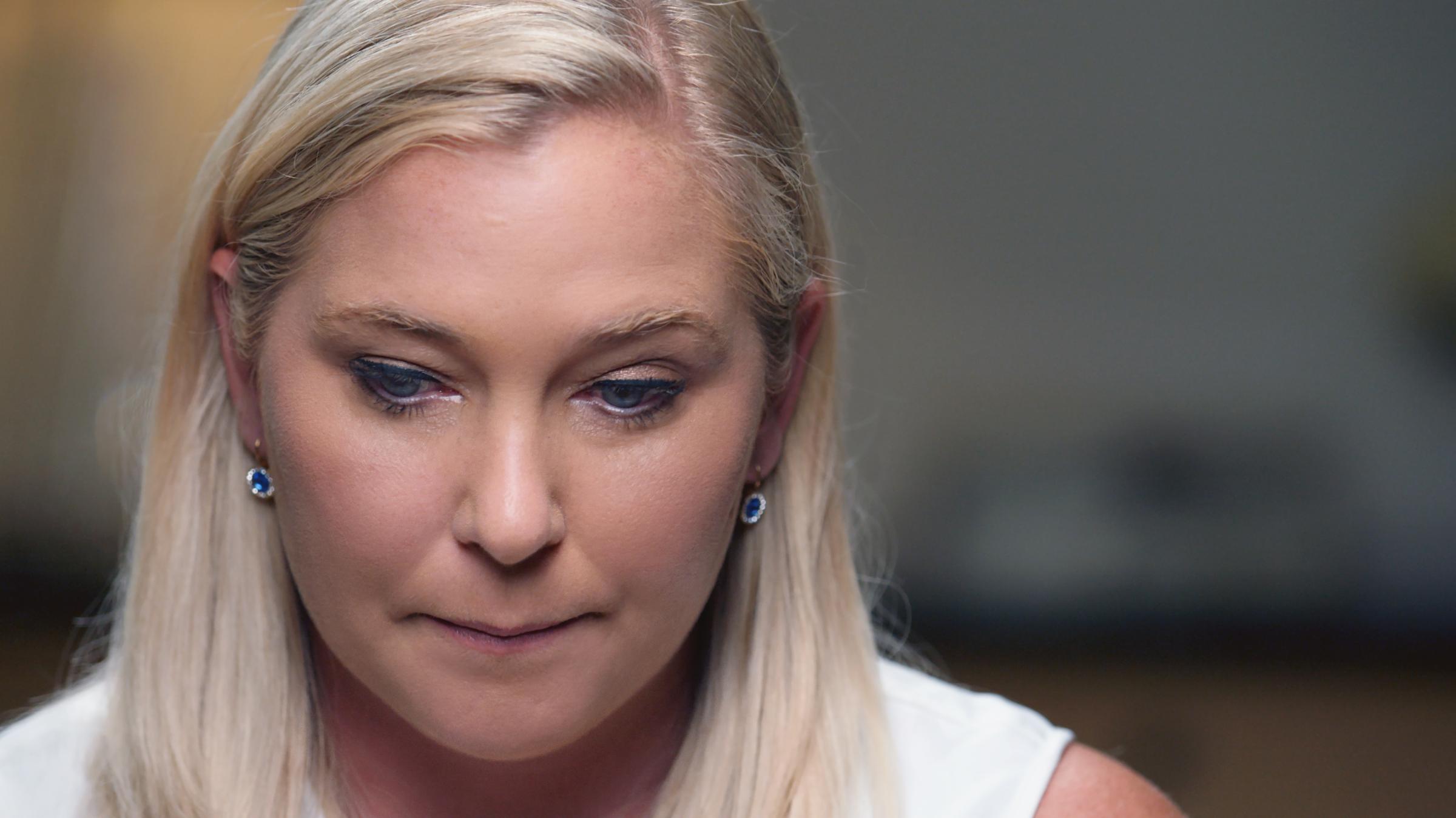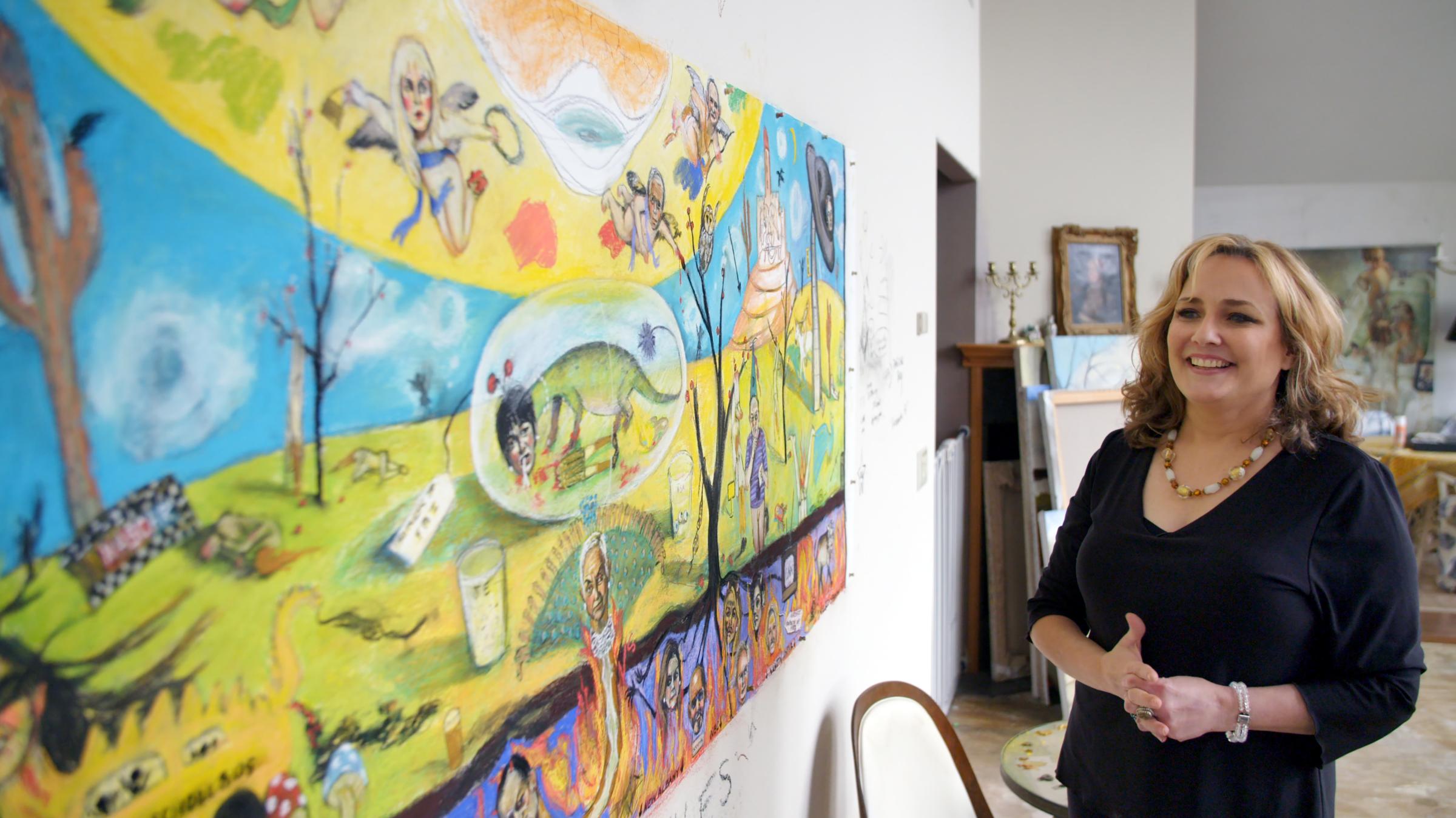Netflix’s latest true crime documentary, Jeffrey Epstein: Filthy Rich, examines how a wealthy and well-connected financier got away with crimes of sexual abuse and sex trafficking for decades. But just as crucially, it provides a space for his survivors to share their own stories.
The four-part series, based on James Patterson’s 2016 book Filthy Rich, features several interviews with survivors and traces a web of powerful people accused of enabling Epstein’s illegal conduct. (Patterson collaborated on producing the series, along with RadicalMedia).
The series documents how accusations of sexual abuse followed Epstein for years before law enforcement took action. Although rumors and allegations swirled, it wasn’t until he was arrested in July 2019 on sex trafficking and conspiracy charges that his crimes became more widely known. The arrest was based on allegations that he had paid young girls, some of whom were underage, for sex and used them to recruit others dating back to 2002, according to a criminal indictment unsealed in Manhattan federal court last year.
Prior to his arrest, Epstein had received increased scrutiny over a plea deal he struck in 2008 to avoid federal prosecution when he was accused of sexually abusing underage girls, after the Miami Herald published an investigative report into the deal in 2018. Under the terms of the plea deal, Epstein served just 13 months in prison and was permitted to leave custody to work in a private office for six days a week.
Lisa Bryant, the director of Filthy Rich, tells TIME that her anger grew as she learned more details about the extent of Epstein’s abuse.
“[He was] this rich guy who was charismatic and just got away with things,” she says. “We really wanted to lay out, step by step, his life and pattern of playing the system. And he did it very well until the very end.”
Production on the documentary series had been underway for nearly nine months before Epstein’s arrest in July 2019. “Everything changed overnight,” Bryant says. “After he was arrested, everyone knew about it so we had to shift a little to covering breaking news. Things were happening so quickly.”
Then, in August 2019, Epstein died in an apparent suicide while in a federal jail in Manhattan. For Bryant and the survivors she’d gotten to know over the process of making the series, Epstein’s sudden death was a blow. “I was mad. These women deserved to see him go to trial,” she says. “I don’t think they’ll ever get the closure that they truly deserve. He didn’t have to ever really answer for his crimes.”
‘It went from something real to something perverted’

Filthy Rich is anchored by the survivors of Epstein’s abuse, now grown women living all over the world. Across their many stories, they recall being recruited or recruiting other girls to go to Epstein’s properties in Palm Beach and New York City or to his private island in the U.S. Virgin Islands to have sex with Epstein, often under the guise that they were being hired to give him massages.
Many of the women who are seen speaking out in the series also came forward to talk about their experiences with various other news outlets, in lawsuits or in their own personal quests for justice. Virginia Roberts Giuffre, one survivor of Epstein’s abuse, is among the first women to share her story in the series. Giuffre has previously spoken out about her allegations against Epstein, including that he sex-trafficked her and made her have sex with the U.K.’s Prince Andrew, the Duke of York, in numerous lawsuits and news stories. (Prince Andrew has repeatedly denied her allegations.) An aspiring massage therapist, Giuffre met Ghislaine Maxwell, Epstein’s former girlfriend, who has been accused of helping him recruit and groom girls for abuse, at Donald Trump’s Mar-a-Lago in 1999, where she was working at the time.
Giuffre recalls that Maxwell urged her to meet Epstein, saying he was looking for a masseuse. At his home in Palm Beach, Giuffre says she massaged Epstein with Maxwell as she told them about her life before they both made her have sex with him. (Maxwell has repeatedly denied any allegations of sexual abuse made against her, including in statements to the production team).
“I felt like it was okay to tell them about my past. And then he turned over,” Giuffre says in the series. “Still to this day, I don’t know how it went from something real to something perverted like that so quickly.”
Another woman, Sarah Ransome, shares that Epstein sexually trafficked her in 2006 when she was around 22. After becoming acquainted with Epstein, Ransome went on a trip with him and a group of people to his private island, where she was continuously sexually abused.
“From the very first day that I arrived on the island the abuse started,” she says. In one instance, Ransome was asked to lie down on a massage table where Epstein raped her, she says. “It was like lying on a surgeon’s table and someone doing things to you that you have no control over. You’re powerless. I was trapped.”
‘A feeling like there was no way out’
As the series unfolds, it traces how Epstein’s exploits were part of a larger sex trafficking ring that involved several co-conspirators who either brushed aside or actively enabled the abuse. Giuffre says in the documentary that Epstein forced her to have sex with his friends, including Prince Andrew, when she was 17. Last year, Prince Andrew said he would retreat from royal public duties amid the controversy over his friendship with Epstein.
Filthy Rich points to the many other notable figures known for associating with Epstein, including President Donald Trump, former President Bill Clinton and former head of Victoria Secret’s parent company Les Wexner. Trump said in 2019 that he hadn’t spoken to Epstein for “15 years”; Clinton in 2019 denied knowing anything about Epstein’s criminal behavior. A spokesperson for Wexner told TIME in 2019 that he severed ties with Epstein more than a decade ago.
At the center of the series is the question of how so many people within Epstein’s circle, knowing rampant abuse was going on at his multiple properties, allowed it to go on for so long. The series shows that by regularly offering young women to his friends for sex, Epstein built a world on blackmail and threats to keep powerful people quiet. The women being trafficked for sex also became trapped, believing they needed Epstein to provide for their basic needs.
“They depended on him for housing, for medicine,” Bryant says. “They were fearful for their lives. There was a feeling like there was no way out.”
‘We need each other to get through this’

A few cultural shifts made many of the women abused by Epstein feel more comfortable speaking out, according to Jon Doran, an executive producer at Radical Media and a producer on the series. The effects of the #MeToo movement and the lasting impact of Dr. Christine Blasey Ford’s testimony about being sexually assaulted by Brett Kavanaugh during his Supreme Court confirmation hearings emboldened some women to come forward, Doran says. (Kavanagh has denied the accusations of sexual misconduct lodged against him.) Epstein’s arrest in 2019 was “monumental” in making his victims feel heard, according to Doran.
The arrest also brought attention to the failures in the criminal justice system that had shielded Epstein from punishment for years. Some of the focus went to former U.S. Labor Secretary Alexander Acosta, who oversaw Epstein’s 2008 plea deal while serving as U.S. Attorney in South Florida. Amid mounting criticism for the way he handled the case, Acosta resigned from his post in July 2019, days after he defended his role in the plea deal.
To Doran, moments like these served to highlight systemic issues that persist even after Epstein’s death.
“This story is far from over. There are other critical enablers that are not accounted for fully yet,” he says. “Wealth and power, it comes with responsibility. And how humans manage that responsibility, that’s exactly what we’re looking at.”
Epstein’s shocking death left his survivors with few answers and no chance to finally face him in court, as many of them share in the series. But they no longer have to live in fear of his far-reaching power—and by finding each other, the women say they have found strength. Maria Farmer, a survivor and an artist whose creativity was hampered for years by the trauma from Epstein’s abuse, says in the series that she began painting again because she was “tired of being afraid.” One artwork, a riff on Bosch’s Garden of Earthly Delights, documented what she experienced with Epstein and his circle.
Lately, however, Farmer’s art has turned toward the other survivors. She’s been making portraits of the other women who also spoke out and plans to have each of them holding paper dolls, which represent the girls who have never come forward.
“It empowers me to provide them with strength,” Farmer says. “We need each other to get through this.”
More Must-Reads from TIME
- Caitlin Clark Is TIME's 2024 Athlete of the Year
- Where Trump 2.0 Will Differ From 1.0
- Is Intermittent Fasting Good or Bad for You?
- The 100 Must-Read Books of 2024
- Column: If Optimism Feels Ridiculous Now, Try Hope
- The Future of Climate Action Is Trade Policy
- FX’s Say Nothing Is the Must-Watch Political Thriller of 2024
- Merle Bombardieri Is Helping People Make the Baby Decision
Write to Mahita Gajanan at mahita.gajanan@time.com